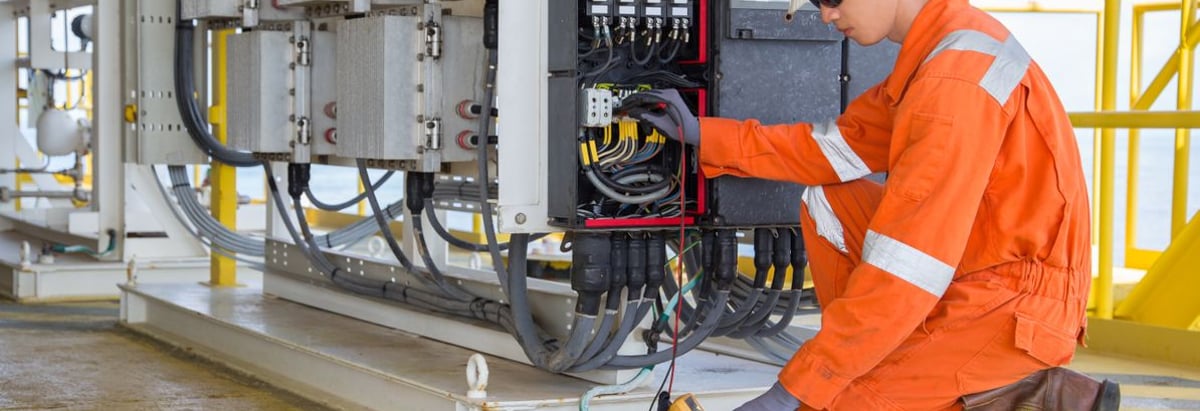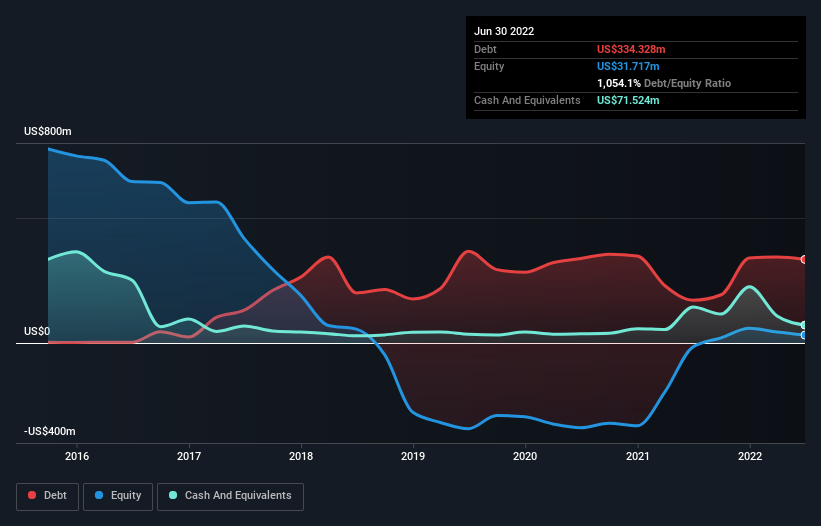- United States
- /
- Electrical
- /
- NYSE:BW
We Think Babcock & Wilcox Enterprises (NYSE:BW) Is Taking Some Risk With Its Debt

The external fund manager backed by Berkshire Hathaway's Charlie Munger, Li Lu, makes no bones about it when he says 'The biggest investment risk is not the volatility of prices, but whether you will suffer a permanent loss of capital.' It's only natural to consider a company's balance sheet when you examine how risky it is, since debt is often involved when a business collapses. We note that Babcock & Wilcox Enterprises, Inc. (NYSE:BW) does have debt on its balance sheet. But is this debt a concern to shareholders?
When Is Debt Dangerous?
Debt and other liabilities become risky for a business when it cannot easily fulfill those obligations, either with free cash flow or by raising capital at an attractive price. Part and parcel of capitalism is the process of 'creative destruction' where failed businesses are mercilessly liquidated by their bankers. However, a more frequent (but still costly) occurrence is where a company must issue shares at bargain-basement prices, permanently diluting shareholders, just to shore up its balance sheet. Having said that, the most common situation is where a company manages its debt reasonably well - and to its own advantage. When we think about a company's use of debt, we first look at cash and debt together.
See our latest analysis for Babcock & Wilcox Enterprises
What Is Babcock & Wilcox Enterprises's Net Debt?
You can click the graphic below for the historical numbers, but it shows that as of June 2022 Babcock & Wilcox Enterprises had US$334.3m of debt, an increase on US$170.9m, over one year. However, because it has a cash reserve of US$71.5m, its net debt is less, at about US$262.8m.

How Strong Is Babcock & Wilcox Enterprises' Balance Sheet?
We can see from the most recent balance sheet that Babcock & Wilcox Enterprises had liabilities of US$302.5m falling due within a year, and liabilities of US$579.7m due beyond that. Offsetting this, it had US$71.5m in cash and US$308.7m in receivables that were due within 12 months. So its liabilities total US$502.0m more than the combination of its cash and short-term receivables.
This deficit is considerable relative to its market capitalization of US$673.8m, so it does suggest shareholders should keep an eye on Babcock & Wilcox Enterprises' use of debt. This suggests shareholders would be heavily diluted if the company needed to shore up its balance sheet in a hurry.
We measure a company's debt load relative to its earnings power by looking at its net debt divided by its earnings before interest, tax, depreciation, and amortization (EBITDA) and by calculating how easily its earnings before interest and tax (EBIT) cover its interest expense (interest cover). The advantage of this approach is that we take into account both the absolute quantum of debt (with net debt to EBITDA) and the actual interest expenses associated with that debt (with its interest cover ratio).
While we wouldn't worry about Babcock & Wilcox Enterprises's net debt to EBITDA ratio of 3.0, we think its super-low interest cover of 1.7 times is a sign of high leverage. So shareholders should probably be aware that interest expenses appear to have really impacted the business lately. However, it should be some comfort for shareholders to recall that Babcock & Wilcox Enterprises actually grew its EBIT by a hefty 6,854%, over the last 12 months. If that earnings trend continues it will make its debt load much more manageable in the future. The balance sheet is clearly the area to focus on when you are analysing debt. But ultimately the future profitability of the business will decide if Babcock & Wilcox Enterprises can strengthen its balance sheet over time. So if you're focused on the future you can check out this free report showing analyst profit forecasts.
Finally, a company can only pay off debt with cold hard cash, not accounting profits. So we clearly need to look at whether that EBIT is leading to corresponding free cash flow. During the last three years, Babcock & Wilcox Enterprises burned a lot of cash. While that may be a result of expenditure for growth, it does make the debt far more risky.
Our View
To be frank both Babcock & Wilcox Enterprises's interest cover and its track record of converting EBIT to free cash flow make us rather uncomfortable with its debt levels. But on the bright side, its EBIT growth rate is a good sign, and makes us more optimistic. Looking at the balance sheet and taking into account all these factors, we do believe that debt is making Babcock & Wilcox Enterprises stock a bit risky. Some people like that sort of risk, but we're mindful of the potential pitfalls, so we'd probably prefer it carry less debt. There's no doubt that we learn most about debt from the balance sheet. But ultimately, every company can contain risks that exist outside of the balance sheet. For instance, we've identified 4 warning signs for Babcock & Wilcox Enterprises (2 are concerning) you should be aware of.
When all is said and done, sometimes its easier to focus on companies that don't even need debt. Readers can access a list of growth stocks with zero net debt 100% free, right now.
Valuation is complex, but we're here to simplify it.
Discover if Babcock & Wilcox Enterprises might be undervalued or overvalued with our detailed analysis, featuring fair value estimates, potential risks, dividends, insider trades, and its financial condition.
Access Free AnalysisHave feedback on this article? Concerned about the content? Get in touch with us directly. Alternatively, email editorial-team (at) simplywallst.com.
This article by Simply Wall St is general in nature. We provide commentary based on historical data and analyst forecasts only using an unbiased methodology and our articles are not intended to be financial advice. It does not constitute a recommendation to buy or sell any stock, and does not take account of your objectives, or your financial situation. We aim to bring you long-term focused analysis driven by fundamental data. Note that our analysis may not factor in the latest price-sensitive company announcements or qualitative material. Simply Wall St has no position in any stocks mentioned.
About NYSE:BW
Babcock & Wilcox Enterprises
Provides energy and emissions control solutions to industrial, electrical utility, municipal, and other customers worldwide.
Undervalued with moderate growth potential.
Market Insights
Community Narratives




